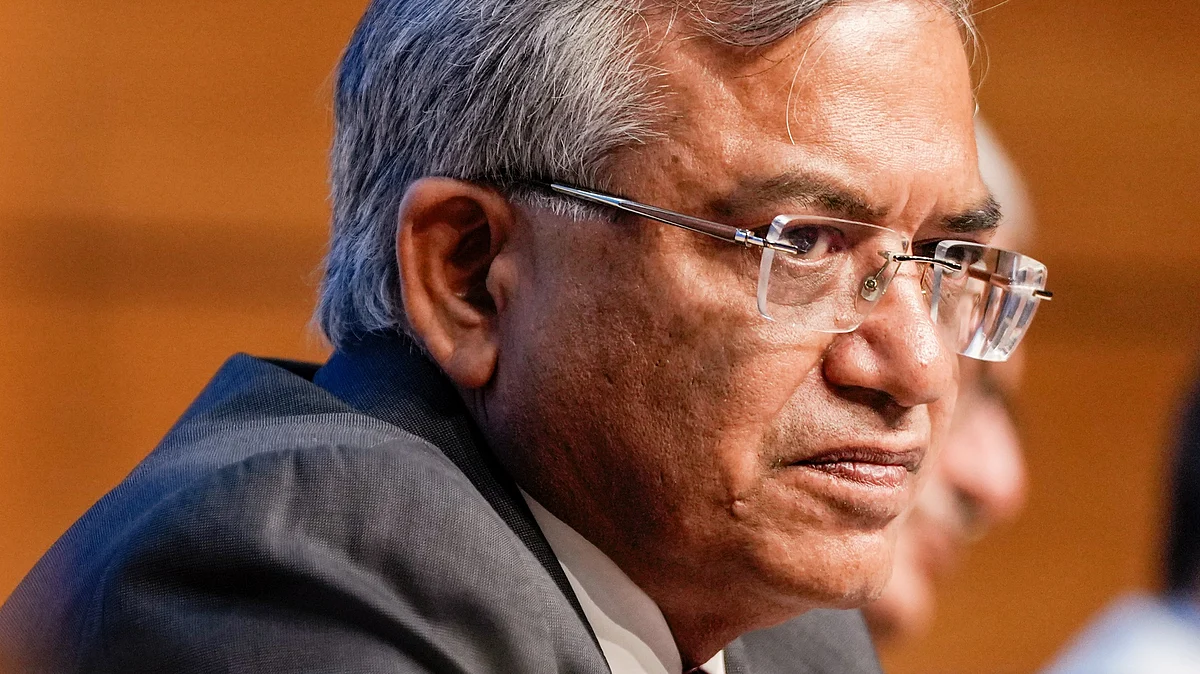CEC Gyanesh Kumar and some of his more embarrassing replies
Kumar is facing all-round criticism for his threats and non-answers at a rare press conference on Sunday

Why was CCTV footage from polling booths not shared with the Opposition in Maharashtra? It was to protect the privacy of women voters, replied Chief Election Commissioner (CEC) Gyanesh Kumar at his press conference on Sunday, 17 August.
The Opposition had sought CCTV footage of polling booths in Maharashtra recorded after polling was officially over during last year’s Assembly election. The footage would have confirmed the Election Commission’s claim that 7-8 per cent of voters cast their votes after the end of polling since voters in queue at the time of closure are entitled to exercise their franchise. Long queues at booths after 5 pm would have dispelled doubts. Why did the ECI refuse to share the footage?
Kumar replied that the footage was not shared in order to protect the privacy of women voters in the queue. The answer has naturally been ridiculed. Given the indignities women voters are subjected to at booths, including frisking by policemen and orders to remove their veils or head coverings, how many women would have turned up to cast their votes in the closing hours of polling?
While intrusive surveillance is the norm and face recognition systems and CCTV cameras are ubiquitous in public places including railway stations, bus stands, restaurants, hotels and airports, how would sharing footage of voters in queues compromise the privacy of women?
The CEC was asked what was the tearing hurry for a Special Intensive Revision (SIR) of electoral rolls barely months before the Assembly election in Bihar. The CEC replied that revisions are required to be conducted before the election, not afterwards.
However, intensive revisions conducted in Bihar in 2003, election watchers like Yogendra Yadav pointed out, were not extended to other states because such revisions are not allowed in election years. Why then has the ECI flouted its own rule?
The CEC was asked why the election commission is reluctant to share ‘machine-readable’ data with the public and political parties. He replied that providing such data would make manipulation of data easier. The reply has come as a shock because the ECI is not being asked for access to its servers and computers, but merely data in a form that will enable computer analyses of large volumes.
To a question whether the ECI’s claim that 22 lakh voters in Bihar passed away in six months though they were alive in the revised list of voters released by the ECI in January, the CEC replied that they had died over the last several years and not just in six months.
Trinamool Congress MP Mahua Moitra was quick to pounce on the reply and comment that the CEC’s reply would mean that the annual revisions carried out every year by the ECI were unreliable and untrustworthy. So, what was the guarantee that an SIR would be flawless?
Asked why the ECI and he himself were insisting that Lok Sabha Leader of Opposition Rahul Gandhi must file an affidavit on oath to back his allegations of ‘votes chori’ (theft) but not the BJP’s Anurag Thakur (who made the same claims as Gandhi), the CEC explained that one had accused the ECI while the other had not.
He also seemed to suggest that there is a difference between complaints made by voters in a particular constituency, and those by non-voters. He failed to elaborate, however, that neither Gandhi nor Thakur are voters in Bengaluru Central (in Gandhi's case), or Wayanad, Rae Bareli, Amethi, Kanauj and Diamond Harbour (mentioned by the BJP leader), so the difference doesn't really apply.
The CEC claimed that between 15 and 20 July, booth-level officers (BLOs) at every level in Bihar had shared the list of deceased, permanently migrated and duplicate voters. The BLOs, he claimed, had also obtained signatures of the villagers. He named 10 panchayats to support his claim.
In a video posted on social media, Yogendra Yadav called the claim a blatant lie and said even in those 10 panchayats, voters had denied any knowledge of such meetings. He pointed out that YouTubers and journalists had called the bluff on the ground and showed voters saying BLOs never visited their home, village or panchayat before filling enumeration forms on their behalf.
Veteran journalist, publisher and YouTuber Paranjoy Guha Thakurta asked four pointed questions in 47 seconds: How were there more voters in Maharashtra than the state’s adult population? What was the tearing hurry to conduct an SIR in Bihar when half the state is under floodwaters? Why didn’t the ECI agree to publish the names of 65 lakh voters whose names have been deleted in the Bihar SIR until the Supreme Court forced it to do so? Finally, why was Maharashtra chief minister Devendra Fadnavis answering questions on behalf of the ECI?
The CEC did not respond to any of the four questions but went ahead and called for the next question. Though there was an evasive answer of sorts to multiple questions punched together, instead of a point by point rebuttal.
Besides giving answers which embarrassed the Election Commission, the CEC did not answer a host of other questions raised.
Follow us on: Facebook, Twitter, Google News, Instagram
Join our official telegram channel (@nationalherald) and stay updated with the latest headlines
